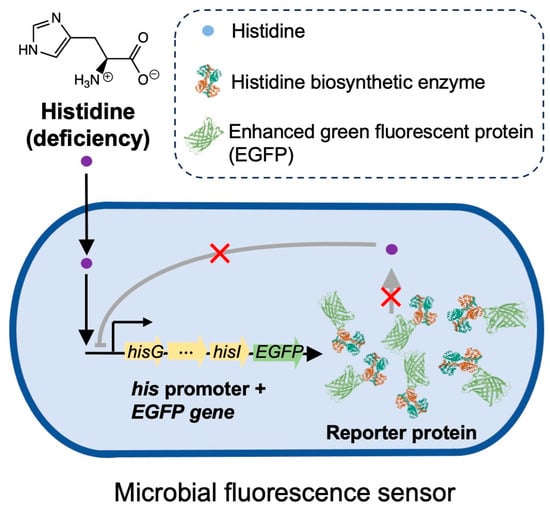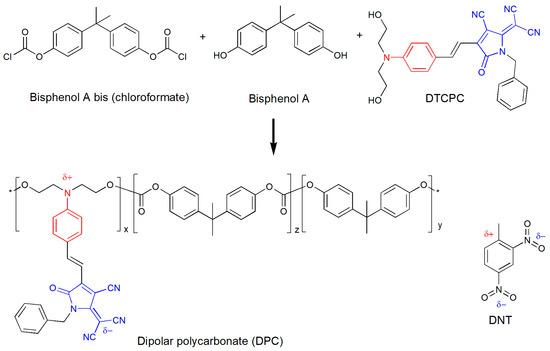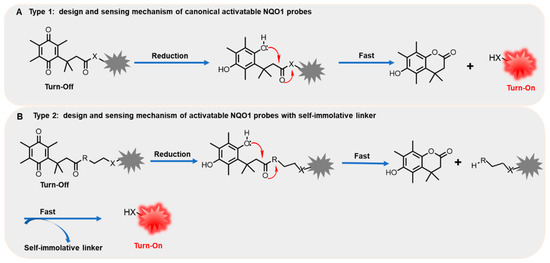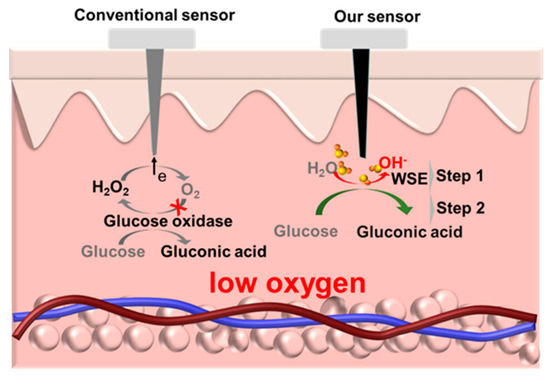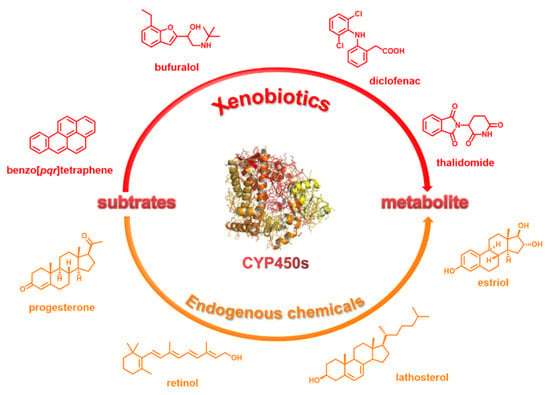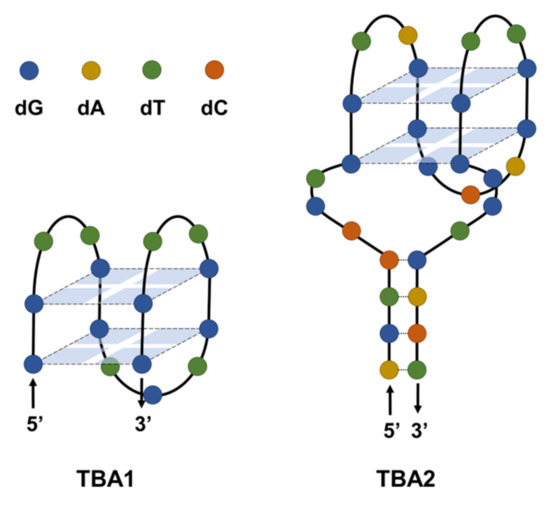Advances of Chemical and Biosensors in China
(Closed)
Share This Topical Collection
Editors
 Prof. Dr. Xiaobing Zhang
Prof. Dr. Xiaobing Zhang
 Prof. Dr. Xiaobing Zhang
Prof. Dr. Xiaobing Zhang
E-Mail
Website
Collection Editor
State Key Laboratory of Chemo/Biosensing and Chemometrics, College of Chemistry and Chemical Engineering, Hunan University, Changsha, China
Interests: biosensors; fluorescent molecular probes; nanosensors and functional DNA-based sensors
Special Issues, Collections and Topics in MDPI journals
 Prof. Dr. Lin Yuan
Prof. Dr. Lin Yuan
 Prof. Dr. Lin Yuan
Prof. Dr. Lin Yuan
E-Mail
Website
Collection Editor
State Key Laboratory of Chemo/Biosensing and Chemometrics, College of Chemistry and Chemical Engineering, Hunan University, Changsha, China
Interests: optical sensing and imaging; functional dye chemistry and molecular probes
 Prof. Dr. Guoliang Ke
Prof. Dr. Guoliang Ke
 Prof. Dr. Guoliang Ke
Prof. Dr. Guoliang Ke
E-Mail
Website
Collection Editor
State Key Laboratory of Chemo/Biosensing and Chemometrics, College of Chemistry and Chemical Engineering, Hunan University, Changsha, China
Interests: fluorescent sensing; DNA nanotechnology
Topical Collection Information
Dear Colleagues,
Chemsensors are a device that transforms chemical information, ranging from the concentration of a specific sample component to total composition analysis, into an analytically useful signal. The development of efficient chemsensors and biosensors is highly important in various aspects of biomedical science and analytical and environmental science. This Topical Collection will provide an overview of the frontiers and progress of chemsensors and biosensors in China.
Topics include but are not limited to:
- Electrochemical sensors
- Optical chemical sensors
- Mass-sensitive sensors
- Field-effect transistor sensors
- Catalytic sensors
- Acoustic and thermal sensors
- Sensor array
- Innovative materials and their sensing application
- Other sensors
Prof. Dr. Xiaobing Zhang
Prof. Dr. Lin Yuan
Prof. Dr. Guoliang Ke
Collection Editors
Manuscript Submission Information
Manuscripts should be submitted online at www.mdpi.com by registering and logging in to this website. Once you are registered, click here to go to the submission form. Manuscripts can be submitted until the deadline. All submissions that pass pre-check are peer-reviewed. Accepted papers will be published continuously in the journal (as soon as accepted) and will be listed together on the collection website. Research articles, review articles as well as short communications are invited. For planned papers, a title and short abstract (about 100 words) can be sent to the Editorial Office for announcement on this website.
Submitted manuscripts should not have been published previously, nor be under consideration for publication elsewhere (except conference proceedings papers). All manuscripts are thoroughly refereed through a single-blind peer-review process. A guide for authors and other relevant information for submission of manuscripts is available on the Instructions for Authors page. Chemosensors is an international peer-reviewed open access monthly journal published by MDPI.
Please visit the Instructions for Authors page before submitting a manuscript.
The Article Processing Charge (APC) for publication in this open access journal is 2700 CHF (Swiss Francs).
Submitted papers should be well formatted and use good English. Authors may use MDPI's
English editing service prior to publication or during author revisions.
Published Papers (11 papers)
Open AccessArticle
Illuminating Histidine-Deficient Intracellular Environments: A Novel Whole-Cell Microbial Fluorescence Sensor
by
Xinyi Li, Zezhou Li and Meiping Zhao
Viewed by 1463
Abstract
Histidine is an essential amino acid with significant implications for human growth and neuromodulation. Its intracellular concentration, whether increased or decreased, can indicate different diseases. While various methods exist for measuring elevated histidine levels, there remains a significant lack of sensors capable of
[...] Read more.
Histidine is an essential amino acid with significant implications for human growth and neuromodulation. Its intracellular concentration, whether increased or decreased, can indicate different diseases. While various methods exist for measuring elevated histidine levels, there remains a significant lack of sensors capable of actively responding to histidine deficiency within cells and releasing strong signals. In this study, we exploited the high induction levels of the
his operon in
S. Typhimurium SL1344, a histidine auxotroph, within a histidine-deficient environment, to develop a specific bacterial sensor with sensitivity towards low histidine concentrations. By employing plasmid vectors with differing copy numbers, we developed two distinct bacterial fluorescence sensors, both capable of actively responding to histidine deficiency and emitting detectable fluorescence signals within either culture mediums or live cells. The SL1344-pGEX sensor, with a high copy number, exhibited remarkable sensitivity and selectivity to histidine in the range of 0 to 50 μM. Notably, even a minimal addition of histidine (approximately 2.5 μM) to the M9 medium led to observable fluorescence reduction, rendering it highly suitable for monitoring histidine-deficient cellular environments. In contrast, the low-copy-number SL1344-pSB3313 sensor exhibits a broader response range, capable of tracking more extensive shifts in histidine concentrations. These sensors allow for sensitive in situ detection of intracellular histidine concentrations in various live cells, particularly responding to real-time changes in cellular histidine levels. This provides a powerful tool for investigating histidine deficiency-related biological processes, the mechanisms of associated diseases, and the assessment and optimization of therapeutic strategies.
Full article
►▼
Show Figures
Open AccessArticle
Sensitive Evanescence-Field Waveguide Interferometer for Aqueous Nitro-Explosive Sensing
by
Wen Wang, Guowei Deng, Zhanwei Hu, Kaixin Chen and Jieyun Wu
Cited by 3 | Viewed by 1804
Abstract
The development of novel chemical nitro-explosive sensors with high sensitivity, low cost and a compact size is essential for homeland security, environmental protection and addressing military challenges. Polymeric optical waveguides based on refractive index sensing are widely used in biochemical detection due to
[...] Read more.
The development of novel chemical nitro-explosive sensors with high sensitivity, low cost and a compact size is essential for homeland security, environmental protection and addressing military challenges. Polymeric optical waveguides based on refractive index sensing are widely used in biochemical detection due to their advantages of large-scale integration, low cost, high sensitivity and anti-electromagnetic interference. In this study, we designed and fabricated a polymer waveguide Mach–Zehnder interferometer (MZI) sensor to detect 2,4-dinitrotoluene (DNT) in water. One phase shifter of the MZI waveguide was functionalized by coating a thin cladding layer of polycarbonate with dipolar chromophores and used as the sensing arm; the other arm was coated with passive epoxy resin cladding and used as the reference arm. The phase difference between the two arms of the MZI was modulated using the refractive index (RI) change in the polycarbonate cladding when dipolar chromophores interacted with electro-deficient DNT. The theoretical sensitivity of the designed MZI can reach up to 24,696 nm/RIU. When used for explosive detection, our fabricated sensor had a maximum wavelength shift of 4.465 nm and good linear relation, with an
R2 of 0.96 between the wavelength shift and a concentration ranging from 3.5 × 10
−5 to 6.3 × 10
−4 mol/L. The sensitivity of our device was 6821.6 nm/(mol/L). The design of an unbalanced MZI sensor, together with the sensing material, provides a new approach to using low-cost, compact and highly sensitive devices for in-field explosive detection.
Full article
►▼
Show Figures
Open AccessReview
Trimethyl Lock Quinone-Based Organic Molecular Probes for NQO1 Sensing and Imaging
by
Kun Chen, Shuai Xu, Zhiling Song and Ke Li
Cited by 4 | Viewed by 2408
Abstract
NAD(P)H: quinone oxidoreductase isozyme 1 (NQO1) is a flavoenzyme and involved in protection against oxidative stress and the regulation of metabolic functions, which is strongly implicated in neurodegenerative diseases and carcinogenic processes. Furthermore, NQO1 is also involved in the modes of action of
[...] Read more.
NAD(P)H: quinone oxidoreductase isozyme 1 (NQO1) is a flavoenzyme and involved in protection against oxidative stress and the regulation of metabolic functions, which is strongly implicated in neurodegenerative diseases and carcinogenic processes. Furthermore, NQO1 is also involved in the modes of action of redox-active drugs (e.g., antimalarials). Determining the activity and localization of NQO1 in living organisms is of great importance for early disease diagnosis and therapy. As a promising and convenient biosensing technique, trimethyl lock quinone-based organic molecular probes have been well established for the specific detection and imaging of NQO1 in living cells and in vivo. In this review, the recent progress of NQO1 probes based on organic small molecules is summarized from the perspectives of molecular design strategies, sensing mechanisms and bioimaging applications. We also elucidate the potential limitations and prospects of current NQO1 probes to further promote the development of versatile imaging tools for NQO1-related biomedical investigation.
Full article
►▼
Show Figures
Open AccessArticle
Highly Selective and Sensitive Sensor Based IL and CMC-MWCNTs Nanocomposite for Rutin Determination
by
Xin Meng, Bao-Lin Xiao, Xin-Yan Song, Xin-Xin Ma, Yang-Yang Li, Lin-Lin Ma, Yu-Jie Chen, Yu-Ying Li, Ke-Xin Xu, Jian-She Wei, Tao Hong, Ali Akbar Moosavi-Movahedi and Jun Hong
Cited by 2 | Viewed by 1985
Abstract
Rutin is a natural antioxidant flavonoid compound with anti-inflammatory, antioxidant, and antiviral effects that is used to prepare drugs with wide application in clinical treatment. Therefore, the quantitative detection of rutin has important practical significance. In this work, a novel electrochemical sensor based
[...] Read more.
Rutin is a natural antioxidant flavonoid compound with anti-inflammatory, antioxidant, and antiviral effects that is used to prepare drugs with wide application in clinical treatment. Therefore, the quantitative detection of rutin has important practical significance. In this work, a novel electrochemical sensor based on glassy carbon electrodes (GCEs) modified with sodium carboxymethylcellulose (CMC), multi-walled carbon nanotubes (MWCNTs), and 1-butyl-3-methylimid (ionic liquid, IL) was developed for the super-sensitive detection of the flavonoid rutin. The properties of these modified materials were analyzed by transmission electron microscope (TEM), cyclic voltammograms (CVs), and electrochemical-impedance spectroscopy (EIS). CMC was used to disperse MWCNTs to further enhance their hydrophilicity and biocompatibility. The modified MWCNTs improved the sensitivity of rutin detection. The square-wave voltammetry (SWV) technique showed that the linear range of rutin concentration determination was 0.01 μM to 1 µM and 1 µM to 10 µM. The minimum concentration detection of rutin was 0.83 nM and 6.6 nM, respectively. The proposed sensor presented good selectivity for rutin and successfully analyzed rutin content in the pharmaceutical rutin tablets. These results are consistent with those measured by ultra-high-performance liquid chromatography (UHPLC). Therefore, this sensor has latent application value in the analysis of rutin in food and drug tablets and nutraceutical samples.
Full article
►▼
Show Figures
Open AccessArticle
Discovering a Dihydrofluorescein Analogue as a Promising Fluorescence Substrate to HRP
by
Jiayan Zhu, Ting Li, Shihui Zhang, Xiaomei Zou, Yingchun Zhou, Weiguo Lu, Zhihui Liu, Tao Deng and Fang Liu
Cited by 4 | Viewed by 2266
Abstract
Horseradish peroxidase (HRP) combined with its fluorescence substrates is attracting increasing attention for biochemical analysis. Amplex red is the most widely used fluorescence substrate to HRP; however, it suffers from some drawbacks, such as nonspecific responsiveness toward carboxylesterases. Discovering a new small molecular
[...] Read more.
Horseradish peroxidase (HRP) combined with its fluorescence substrates is attracting increasing attention for biochemical analysis. Amplex red is the most widely used fluorescence substrate to HRP; however, it suffers from some drawbacks, such as nonspecific responsiveness toward carboxylesterases. Discovering a new small molecular fluorescence substrate with improved sensitivity and selectivity for HRP is thus desired. Herein, three dihydrofluorescein derivatives (DCFHs) are presented to serve as HRP substrates through fluorescence turn-on methods. The most promising one, 2,7-dichloro-9-(2-(hydroxymethyl)phenyl)-9H-xanthene-3,6-diol (
DCFH-1), exhibited excellent sensitivity in the detection of HRP. Moreover,
DCFH-1 does not respond to carboxylesterase, thus holding advantages over Amplex red. In the further study, the detection reagent in the commercial ELISA kits was replaced with
DCFH-1 to establish a new fluorescence ELISA, which works very well in the quantification of inflammatory cytokine biomarkers from in vitro models.
Full article
►▼
Show Figures
Open AccessArticle
Continuous Glucose Monitoring in Hypoxic Environments Based on Water Splitting-Assisted Electrocatalysis
by
Lanjie Lei, Chengtao Xu, Xing Dong, Biao Ma, Yichen Chen, Qing Hao, Chao Zhao and Hong Liu
Cited by 1 | Viewed by 3271
Abstract
Conventional enzyme-based continuous glucose sensors in interstitial fluid usually rely on dissolved oxygen as the electron-transfer mediator to bring electrons from oxidase to electrode while generating hydrogen peroxide. This may lead to several problems. First, the sensor may provide biased detection results owing
[...] Read more.
Conventional enzyme-based continuous glucose sensors in interstitial fluid usually rely on dissolved oxygen as the electron-transfer mediator to bring electrons from oxidase to electrode while generating hydrogen peroxide. This may lead to several problems. First, the sensor may provide biased detection results owing to fluctuation of oxygen in interstitial fluid. Second, the polymer coatings that regulate the glucose/oxygen ratio can affect the dynamic response of the sensor. Third, the glucose oxidation reaction continuously produces corrosive hydrogen peroxide, which may compromise the long-term stability of the sensor. Here, we introduce an oxygen-independent nonenzymatic glucose sensor based on water splitting-assisted electrocatalysis for continuous glucose monitoring. For the water splitting reaction (i.e., hydrogen evolution reaction), a negative pretreatment potential is applied to produce a localized alkaline condition at the surface of the working electrode for subsequent nonenzymatic electrocatalytic oxidation of glucose. The reaction process does not require the participation of oxygen; therefore, the problems caused by oxygen can be avoided. The nonenzymatic sensor exhibits acceptable sensitivity, reliability, and biocompatibility for continuous glucose monitoring in hypoxic environments, as shown by the in vitro and in vivo measurements. Therefore, we believe that it is a promising technique for continuous glucose monitoring, especially for clinically hypoxic patients.
Full article
►▼
Show Figures
Open AccessEditor’s ChoiceReview
Engineering Rational SERS Nanotags for Parallel Detection of Multiple Cancer Circulating Biomarkers
by
Zhipeng Zhang, Rui Guan, Junrong Li and Yao Sun
Cited by 16 | Viewed by 3677
Abstract
Precision cancer medicine necessitates a personalized treatment plan for each individual patient. Given cancer’s heterogeneity and dynamic nature, the plot of patient-specific signatures composed of multiple cancer circulating biomarkers is useful to reveal the complete tumor landscape for guiding precision medicine. As an
[...] Read more.
Precision cancer medicine necessitates a personalized treatment plan for each individual patient. Given cancer’s heterogeneity and dynamic nature, the plot of patient-specific signatures composed of multiple cancer circulating biomarkers is useful to reveal the complete tumor landscape for guiding precision medicine. As an emerging new technology, surface-enhanced Raman scattering (SERS) shows the intrinsic advantage of performing multiplexed detection with the extremely narrow Raman spectral line widths. In this review, we first discuss the design principle of SERS nanotags to enable the detection of multiple circulating biomarkers, highlighting the important roles of plasmonic nanostructures and triple bond-modulated Raman reporters. Following this, we detail the use of isotropic and anisotropic nanostructures as SERS enhancement substrates for amplifying Raman signals in multi-biomarker detection. Furthermore, we present the triple bond-modulated molecules as Raman reporters in SERS nanotags to expand the multiplexing capability for biomarker measurements. Finally, we offer critical insights into the challenges and perspectives of SERS nanotags for cancer diagnosis, particularly from the aspect of future clinical transition. It is expected that this review can facilitate the design of more functional SERS nanotags with high sensitivity and multiplexing capability to assist early and accurate cancer screening. We also believe our review will be of interest in the fields of molecular imaging, biomedicine, and analytical chemistry.
Full article
►▼
Show Figures
Open AccessArticle
WO3-Nanocrystal-Modified Electrodes for Ultra-Sensitive and Selective Detection of Cadmium (Cd2+) Ions
by
Ruiqin Gu, Yunong Zhao, Huibing Fu, Qing Huang, Long Li, Zhixiang Hu, Licheng Zhou, Bingbing Chen and Huan Liu
Cited by 1 | Viewed by 1674
Abstract
The detection of heavy metal ions is becoming increasingly important for environmental monitoring and personal safety protection. Owing to their large surface area and suitable conductivity, metal oxide semiconductor nanocrystals have been utilized in chemically modified electrodes for the rapid and low-cost detection
[...] Read more.
The detection of heavy metal ions is becoming increasingly important for environmental monitoring and personal safety protection. Owing to their large surface area and suitable conductivity, metal oxide semiconductor nanocrystals have been utilized in chemically modified electrodes for the rapid and low-cost detection of heavy metal ions. However, their sensitivity and selectivity for cadmium ion (Cd
2+) detection still remains a challenge. Here, a method of ultra-sensitive and selective Cd
2+ detection based on WO
3-nanocrystal-modified electrodes is proposed and demonstrated. Colloidal WO
3 nanocrystals were synthesized via a solvothermal route and then deposited onto a carbon electrode using a spin-coating method, forming the modification layer at room temperature. The WO
3-nanocrystal-modified electrodes exhibit a remarkable signal transduction capability that converts Cd
2+ adsorption into current output signals. The peak current was linear to the logarithm of the Cd
2+ concentration from 1 nM to 10,000 nM when measured using the anodic stripping voltammetry method. The selectivity mechanism was studied and attributed to the high adsorption energy of cadmium on WO
3 compared to other heavy metal ions. Employment of WO
3 for a high-performance Cd
2+-selective electrode opens many opportunities in portable ion-detection applications.
Full article
►▼
Show Figures
Open AccessArticle
Influences of Impurity Gases in Air on Room-Temperature Hydrogen-Sensitive Pt–SnO2 Composite Nanoceramics: A Case Study of H2S
by
Xilai Lu, Menghan Wu, Yong Huang, Jiannan Song, Yong Liu, Zhiqiao Yan, Feng Chen, Jieting Zhao and Wanping Chen
Cited by 6 | Viewed by 2130
Abstract
The slight but cumulative influence of impurity gases in air poses a great threat to the long-term stability of room-temperature gas sensors. Room-temperature hydrogen-sensitive Pt–SnO
2 composite nanoceramics of 5 wt% Pt were prepared through pressing and sintering. The response of a sample
[...] Read more.
The slight but cumulative influence of impurity gases in air poses a great threat to the long-term stability of room-temperature gas sensors. Room-temperature hydrogen-sensitive Pt–SnO
2 composite nanoceramics of 5 wt% Pt were prepared through pressing and sintering. The response of a sample was over 10,000 after being exposed to 500 ppm H
2S–20% O
2–N
2 at room temperature, and the room-temperature hydrogen sensing capacity was seriously degraded even for samples that had aged dozens of days since H
2S exposure. Mild heat treatments such as 160 °C for 10 min were found able to fully activate those H
2S-exposed samples. As the peak of S 2p electron was clearly detected in H
2S-exposed samples, it was proposed that for room-temperature hydrogen-sensitive Pt–SnO
2 composite nanoceramics, H
2S exposure induced degradation results from the poisoning of Pt by H
2S deposited on it, which can be removed through a mild heat treatment. Periodic mild heat treatment should be a convenient and effective measure for room-temperature metal oxide gas sensors to achieve long-term stability through preventing the accumulation of impurity gases in air deposited on them.
Full article
►▼
Show Figures
Open AccessReview
Recent Advances in Molecular Fluorescent Probes for CYP450 Sensing and Imaging
by
Haiyan Li, Yang Sheng, Wei Li and Lin Yuan
Cited by 14 | Viewed by 4443
Abstract
Cytochrome P450 (CYP450) is a major drug-metabolizing enzyme system mainly distributed in liver microsomes and involved in the metabolism of many endogenous substances (such as fatty acids and arachidonic acids), and exogenous compounds (such as drugs, toxicants, carcinogens, and procarcinogens). Due to the
[...] Read more.
Cytochrome P450 (CYP450) is a major drug-metabolizing enzyme system mainly distributed in liver microsomes and involved in the metabolism of many endogenous substances (such as fatty acids and arachidonic acids), and exogenous compounds (such as drugs, toxicants, carcinogens, and procarcinogens). Due to the similarity in structures and catalytic functions between CYP450 isoforms, the lack of effective selective detection tools greatly limits the understanding and the research of their respective physiological roles in living organisms. Until now, several small-molecular fluorescent probes have been employed for selective detection and monitoring of CYP450s (Cytochrome P450 enzymes) in vitro or in vivo owing to the tailored properties, biodegradability, and high temporal and spatial resolution imaging in situ. In this review, we summarize the recent advances in fluorescent probes for CYP450s (including CYP1, CYP2, and CYP3 families), and we discuss and focus on their identification mechanisms, general probe design strategies, and bioimaging applications. We also highlight the potential challenges and prospects of designing new generations of fluorescent probes in CYP450 studies, which will further enhance the diversity, practicality, and clinical feasibility of research into CYP450.
Full article
►▼
Show Figures
Open AccessReview
Aptamer-Based Sensors for Thrombin Detection Application
by
Hongzhi Sun, Nannan Wang, Lin Zhang, Hongmin Meng and Zhaohui Li
Cited by 14 | Viewed by 4153
Abstract
Thrombin facilitates the aggregation of platelet in hemostatic processes and participates in the regulation of cell signaling. Therefore, the development of thrombin sensors is conducive to comprehending the role of thrombin in the course of a disease. Biosensors based on aptamers screened by
[...] Read more.
Thrombin facilitates the aggregation of platelet in hemostatic processes and participates in the regulation of cell signaling. Therefore, the development of thrombin sensors is conducive to comprehending the role of thrombin in the course of a disease. Biosensors based on aptamers screened by SELEX have exhibited superiority for thrombin detection. In this review, we summarized the aptamer-based sensors for thrombin detection which rely on the specific recognitions between thrombin and aptamer. Meanwhile, the unique advantages of different sensors including optical and electrochemical sensors were also highlighted. Especially, these sensors based on electrochemistry have the potential to be miniaturized, and thus have gained comprehensive attention. Furthermore, concerns about aptamer-based sensors for thrombin detection, prospects of the future and promising avenues in this field were also presented.
Full article
►▼
Show Figures







